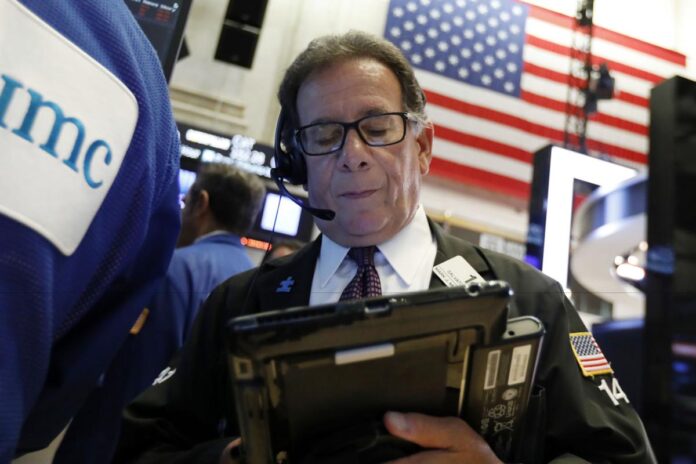Wall Street stock futures and Asian shares erased most of their earlier gains in choppy trade on Wednesday, as results from the U.S. midterm elections showed Republicans close to losing their grip on Congress.
U.S. S&P 500 futures were last up 0.15 per cent, paring most of their 0.6 per cent gain earlier, as the latest results improved the odds of opposition Democrats taking control of the House of Representatives.
The congressional elections is billed as a referendum on President Donald Trump’s polarising style and “America First” policies.
Investor sentiment has been volatile in Asian trade with stocks and the dollar swinging on the Republicans’ fluctuating prospects of retaining the House.
By late morning, broadcasters were projecting the Democrats to have wrested control of the House.
Asian shares retained most of their gains but were off their highs with MSCI’s broadest index of Asia-Pacific shares outside Japan up 0.3 per cent while Japan’s Nikkei rose 1.2 per cent.
Leading into the election, investors had expected the Democrats to gain a majority in the House and, as a result, remained sceptical about Trump’s proposal late last month on tax cuts for middle-income households.
Market participants had previously said a surprise House win by the Republicans could boost the chances of further tax cuts and pro-business policies while a Democrats’ victory was likely to have already been priced in.
In the U.S. Senate race, the Republicans held an upper hand, unseating a Democratic incumbent in Indiana, which Democrats badly needed to win that chamber.
“The House results so far are showing a better than expected performance for the Republicans, even if they don’t keep the House,” said Steven Englander, global head of G10 FX research at Standard Chartered Bank in New York.
“So it doesn’t look like a big blue wave and Republicans might do a bit better than expected in the Senate and the market is therefore reacting with a stronger dollar, higher U.S. yields and higher U.S. equities,” he said.
On the other hand, many investors also expect Trump to continue to take a hard line on tariffs, which he can impose without Congressional approval. That keeps alive worries about a trade war between China and the United States.
Trump’s massive tax cut, enacted in December, and a spending agreement reached in February have helped lift the U.S. economy, but they have also widened U.S. federal budget deficit. As a result, Treasury supply has been growing, pushing U.S. bond yields higher.
The 10-year U.S. Treasuries yield fell about 1 basis points to 3.193 per cent near its seven-year high of 3.261 per cent touched a month ago, as investors sold ahead of this week’s record amounts of longer-dated government debt supply.
Oil prices were soft after a 2 per cent fall the previous day, with U.S. crude futures hitting an eight-month low as Washington granted sanction waivers to top buyers of Iranian oil and as Iran said it has so far been able to sell as much oil as it needs to.
U.S. West Texas Intermediate (WTI) crude futures traded down 0.7 per cent at $61.78 a barrel having hit a low of $61.31 on Tuesday, the weakest price since March 16.
The dollar index recovered from early losses to trade slightly higher.
Against the yen, the U.S. currency rose to one-month high of 113.82 yen while the euro stood flat at $1.1427, retreating from a rise to two-week high of $1.1473.
The yen stood steady at 113.45 per dollar while the British pound changed hands at $1.3100, flat on the day.
Earlier the sterling hit a three-week high, extending gains on hopes of a Brexit deal breakthrough after Brexit Secretary Dominic Raab said “Thumbs Up” on his way out of a cabinet meeting.
That helped sterling recover losses following remarks from a senior member of the Northern Irish Democratic Unionist Party earlier that it looked like Britain would exit the EU without a deal.
Wall Street stock, Asian shares erase earlier gains
RELATED ARTICLES




